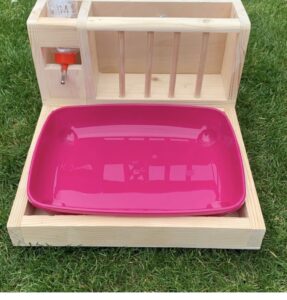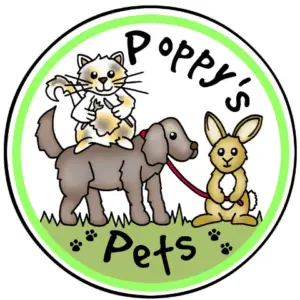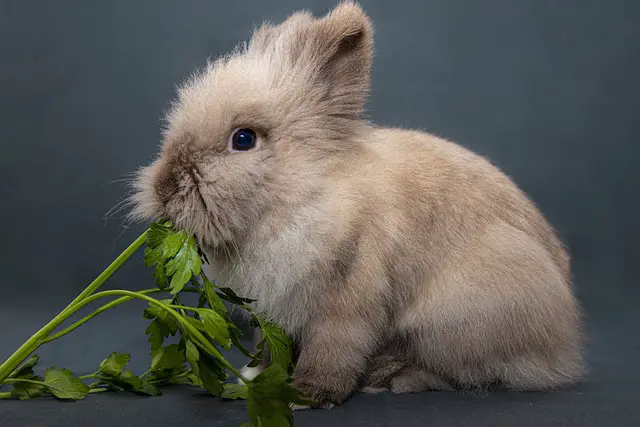My giant white rabbit was called Cottontail and lived in a wooden hutch outside. He played in the garden with our two Chihuahuas and came into the house occasionally. Cottontail was a rabbit who was very loved. Back in the 1980s, rabbits were outdoor creatures. Today, we can litter-train our bunny so it becomes a house rabbit. So how do you train a rabbit to use a litter tray at home?
What do we need to think of to help a rabbit integrate into home life:
- Why you should spay or neuter your rabbit
- Can you litter train a rabbit
- Pooping outside the litter tray
- Do rabbits smell
- Positive reinforcement
- Bonding with your rabbit
It is becoming more common to have a house rabbit, but there are things to put in place beforehand.
Spaying or neutering your rabbit is essential
Females are spayed
Males are neutered or castrated
Both sexes should be neutered or spayed between four to six months of age but speak to your veterinary practice to get the age they recommend. The age can differ between male and female rabbits.
Urine spraying is seen more in male rabbits than females; if your boy rabbit reaches maturity, urine odour is more pungent. A male rabbit will spray urine to mark their territory in the home on you and female rabbits. It will also become more aggressive, so you could face being bitten or lunged at.
Females will spray to mark their territory too, and like male rabbits, can become aggressive.
When either sex sprays, they can do so on vertical surfaces. It is important to neuter or spay at a young age, as if still intact when either sex reaches sexual maturity, the spraying or aggression may not stop. Neutering or spaying can prevent life-threatening illnesses such as (example) uterine cancer, too.
Make an appointment with your vet if your rabbit is between four and six months. If you join The Pet Health Club, you get 20% off neutering. Read what’s on offer: it costs £12.99 a month (October 2022), and you may save on vaccinations, nail clipping and in-house pet shop sales over a year. I do with the Cat Plan.
Litter training a rabbit in the home

Yes, you can litter-train a rabbit, but it might occasionally poop outside the tray. Rabbits are intelligent creatures and can be contented using a clean litter tray. The good news is training can start at any age, but advisable to neuter or spay your rabbit first for the best outcome.
Before I give tips for litter training, some litters are dangerous for your rabbit.
- Your rabbit may eat the litter
- Avoid clumping clay-type litter. This can clump in the gut and block the digestive tract
- Avoid softwood litter as it can cause liver damage
- Some cat litters can cause zinc poisoning in rabbits
- Avoid sawdust-based litter. It can irritate the skin and lungs and result in liver inflammation
- Avoid wood shavings as in the long-term it may cause lung and skin irritation
- Silicon-based wood-based cat pellets should be avoided
- Scented litter
Litters recommended for your rabbit are:
- Recycled shredded paper
- Alfala plants, paper, hay or organic litter
A rabbit needs a large litter tray for movement, with hay beside it, because a rabbit will toilet and eat simultaneously. You can buy trays in various sizes, but 55 length x 43 width x 16.5 cm height is recommended. Two companion rabbits can use the bigger size. One side should be low enough to allow a bunny to climb in easily.
Maintaining a clean litter tray and changing the contents every other day is essential. To keep a rabbit focused on where it toilets, put a small amount of poop back in the litter tray. Don’t worry; rabbit poop isn’t too smelly and will stop accidents.
We have two choices for litter trays – one commercial and the other handmade.
Robin’s Runs handmakes wooden rabbit litter trays and a selection of enrichment products. The Hay Feeder & Litter Tray measures 40 x 40 x 18cm high. The tray sits inside a wooden framework, with an upright hay feeder measuring 27cm long x 10cm wide and 16cm high and a 320ml water bottle.
A cheaper product is a corner tray by Options, available in two sizes. The largest measures 42cm width left to right, 30cm depth back corner to the front, 21cm high in the back corner and 8cm front lip. The low lip is ideal for small rabbits, guinea pigs and ferrets to climb in. It would be a product I would consider for a cat with arthritis too.
Initially, place the tray in a small secure area during the early stages of litter training. Gradually increase the space as your bunny becomes accustomed to using the toilet, and continuously reward it for good behaviour.
Tesco sells Rotastak nibble sticks, which can be chopped up and given as small treats. An alternative is handmade foods by Fluffy Creatures Limited – the seller makes heart-shaped treats made of bananas and oats with a choice of blueberry or raspberry.
Pooping outside the litter tray
Yes, initially, your rabbit may have accidents outside the litter tray. It might be urine or poop.
Although not yet added to DIY Hacks includes lots of quick tips – biological washing powder mixed with hot water is something I have used when an elderly cat had a urine accident. Using a floor brush with stiff bristles, scrub the carpet twice daily for a week. And when my other elderly cat had cystitis and an accident on a rug, I used biological washing powder followed by a Bissel Carpet Cleaner. Use a cloth for a hard floor, but do not drench the floor.
Never use bleach. Ammonia will attract further urination. Why? Ammonia is found in urine. Supreme produce a liquid cleaner for litter trays, cages, hutches, bedding and carpets. The product helps prevent bacterial infections and reduces the risk of flystrike too.
Remember, too, rabbits dislike their toileting area near sleeping or food areas, so ensure the tray is away from this area.
Rabbits are clean creatures
Yes, they are!
Like cats, they actively groom and wash; if your rabbit has a companion, they will groom each other.
Rabbits moult. The first time at around 5 to 6 weeks, then again around five months. As your rabbit grows up, moulting occurs each Spring and Autumn, so brushing your rabbit is advised.
Wilko sells 2-piece grooming set for £5.25 (October 2022), or SuperPet has a kit comprising of a soft bristle brush, Smellin’ Good Spray fragrance, Quick & Clean Shampoo and a toy. This kit is available at VioVet.
Begin with positive reinforcement

Never hit, shout or scold any pet. Animals do not understand our language, but they will be alarmed and frightened if you shout at them, physically punish them, and have threatening body language. Like us, mistakes will be made, and continued calm learning is the key. You’ll have a happy, confident bunny if you do.
Rabbits, like most animals, love treats. Reward good behaviour with a tasty treat or give washed fresh greens.
**Fresh vegetables:
- Broccoli leaves
- Cauliflower leaves
- Romaine or dark leaf lettuce
- Spinach
- Courgette
- Parsnip
**If you grow the following in the garden:
- Basil
- Rosemary
- Thyme
- Oregano
**Ensure any vegetables or herbs have not been sprayed with toxic garden sprays.
Petting with words is another positive reinforcement for good behaviour:
- Your rabbit’s name
- ‘Good boy / girl’
- Followed by a treat
Decide on words that your rabbit can identify with naughty behaviour but say the words calmly:
- Your rabbit’s name
- A firm ‘No’
Bonding with a rabbit
Single rabbits will need lots of human contact so if you plan to have one rabbit, be prepared to commit time and effort to have a happy rabbit.
If you plan to have two rabbits, you need a neutered male and a spayed female. Two males living together, or two un-spayed females, may fight. So ensure you give a home to a male and female to avoid conflict and heartache.
Start the bonding process with cuddles, calmness, stroking, and treats. Be patient, understand your bunny, and give your rabbit time as, like all animals, they respond to love.
In Memory
Cottontail – never forgotten.
Poppys Pets is a participant in Awin and Amazon Associate affiliate programs which compensates me for referring traffic. It is of no extra cost to you and if thinking of buying a product, please consider using my link. It\'ll earn Poppy\'s Pets a few pennies to continue to this website. Only a selection of articles and videos on this website and YouTube channel contains affiliate links. Further information: Disclaimer and Privacy Policy
Poppy’s Pets has a column in a local paper in the Holderness area in East Yorkshire.


